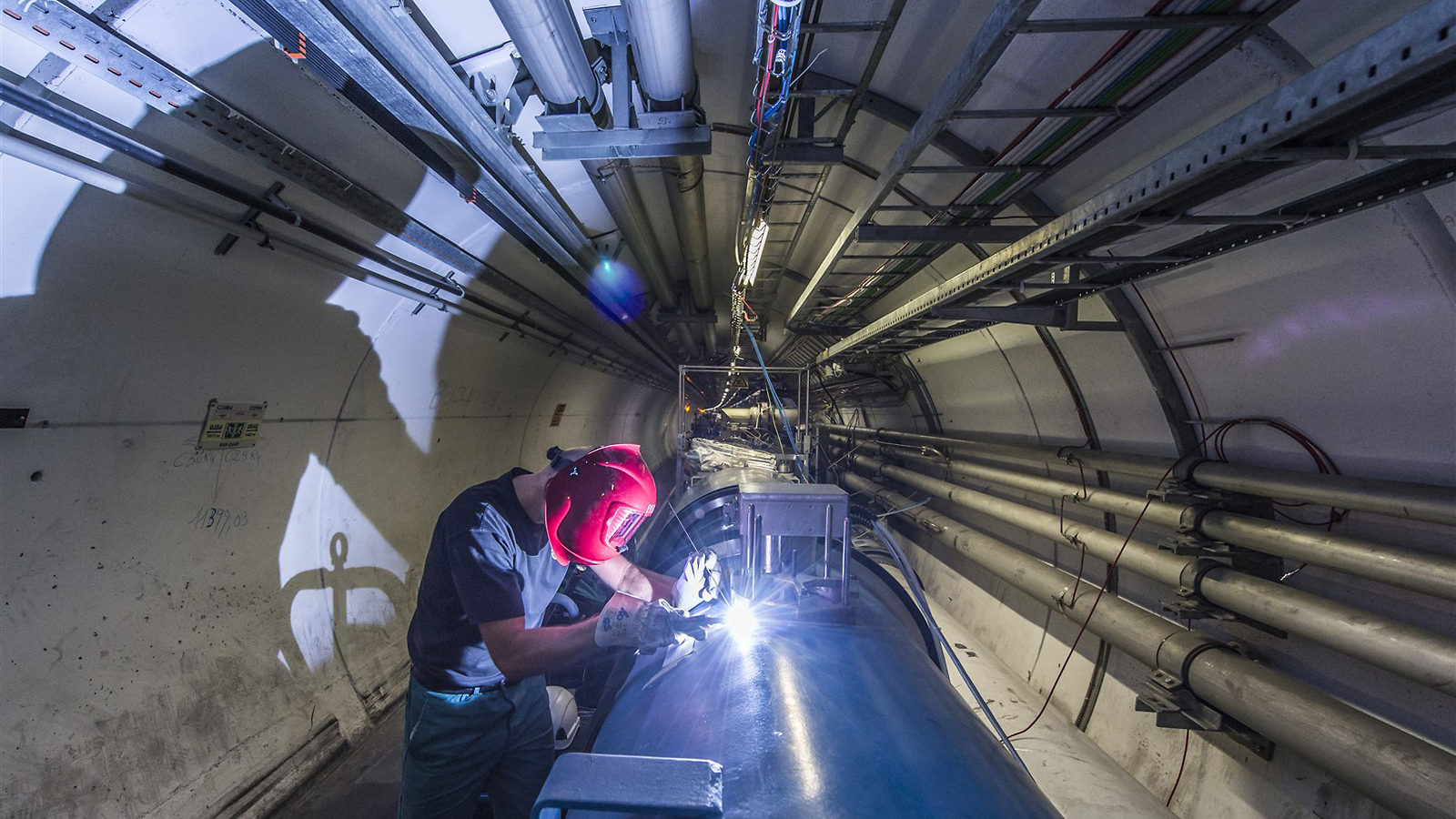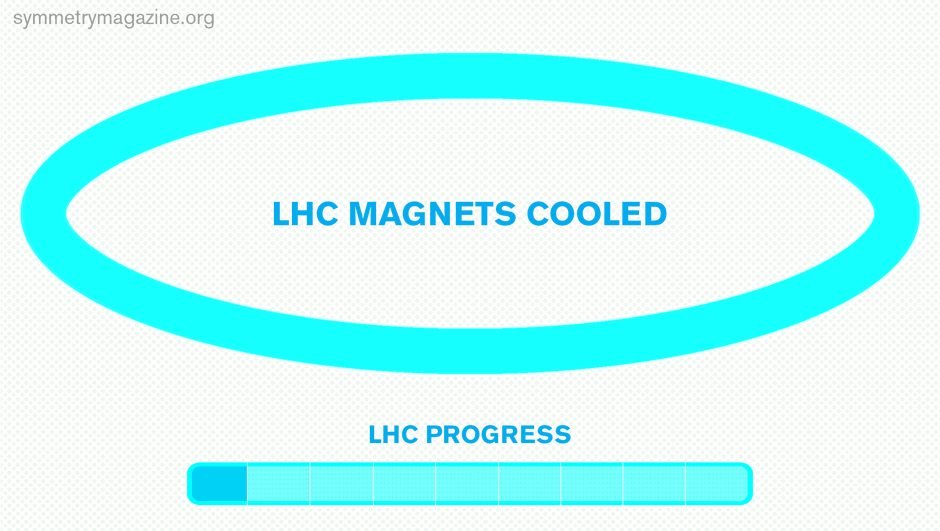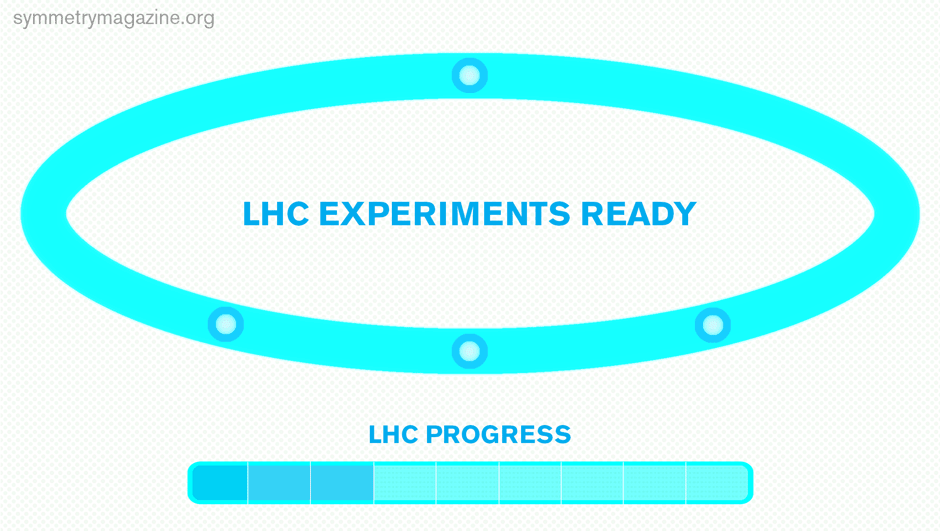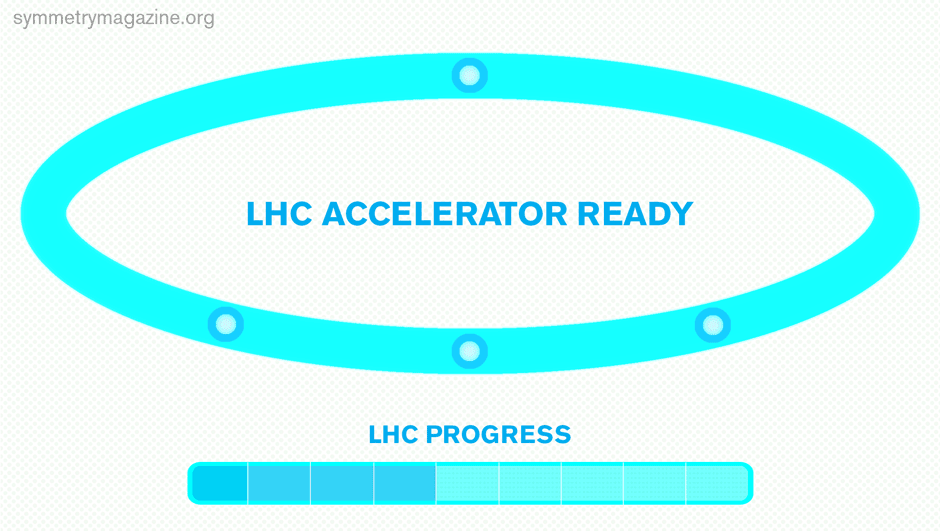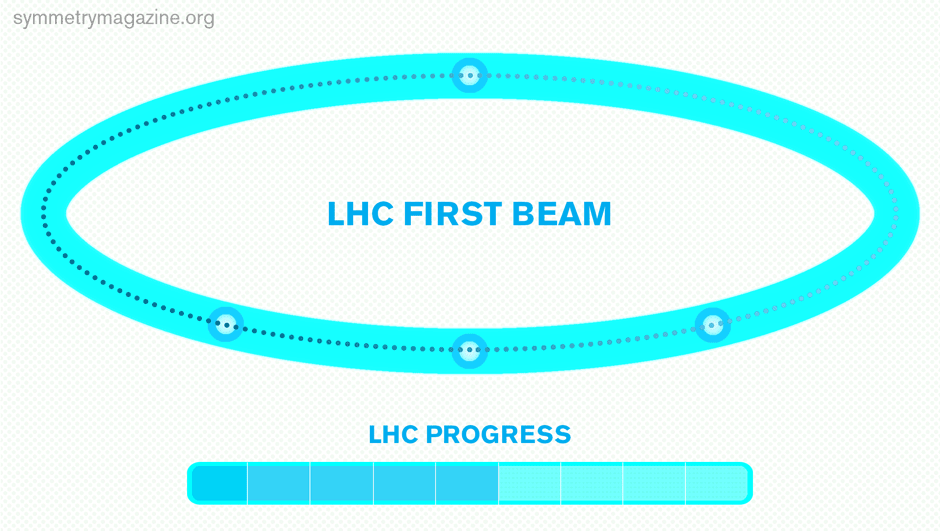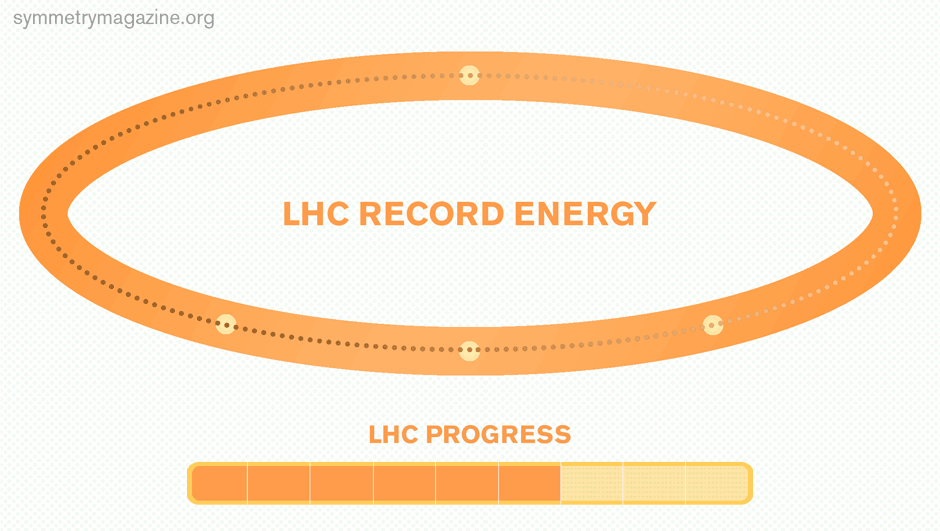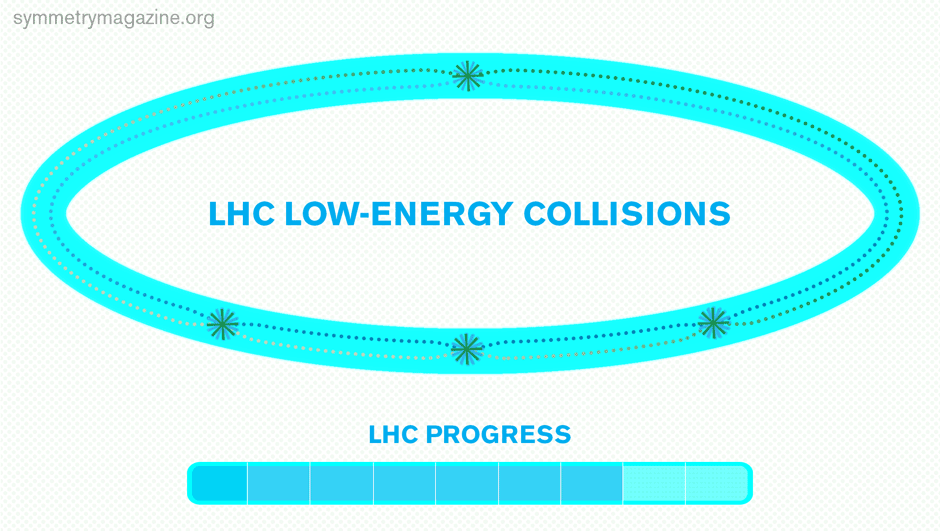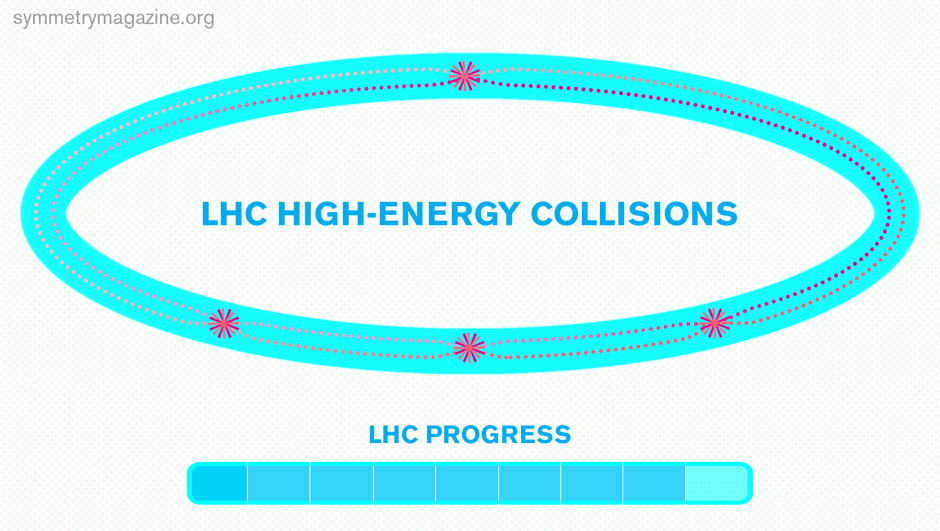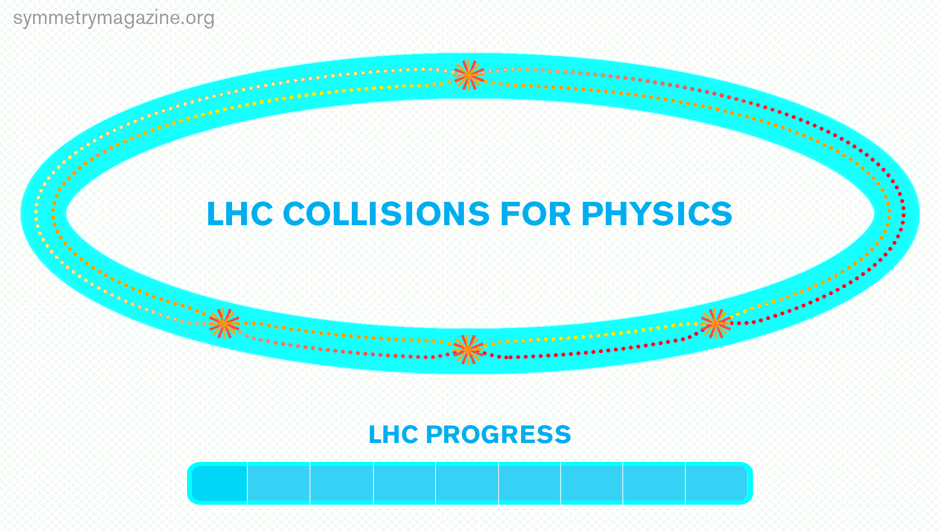This week, one-eighth of the LHC dipole magnets reached the energy they’ll need to operate in 2015.
Engineers at CERN powered 154 superconducting magnets to a current of around 11,000 amps. This is about a thousand times greater than an average household appliance and is required to make the 50-foot-long electromagnets powerful enough to bend particles moving close to the speed of light around the curves of the LHC.
“Over the summer we plan to ramp up the LHC to the highest energy ever achieved in a collider experiment,” says Mirko Pojer, an LHC engineer-in-charge and co-leader of the magnet re-commissioning team. “But before we do that, we need to make sure that our magnets are primed and ready for the job.”
From 2010 to 2013, the LHC produced proton-proton collisions of up to 8 trillion electronvolts. This first run allowed physicist to probe a previously inaccessible realm of physics and discover the Higgs boson. But the LHC is designed to operate at even higher energies, and physicists are eager to see what might be hiding just out of reach.
“We had a very successful first run and made a huge discovery, but we want to keep probing,” says Greg Rakness, a UCLA researcher and CMS run coordinator. “The exciting thing about the next run is that we have no idea what we could find, because we have never been able to access this energy realm before.”
To prepare the LHC for 13 trillion electronvolt proton-proton collisions, CERN shut down the machine for almost two years for upgrades and repairs. This involved reinforcing almost 1700 magnet interconnections, including more than 10,000 superconducting splices.
Now that that work is completed, engineers are putting the LHC magnets through a strenuous training program. Like Rocky Balboa prepping for a big fight, the magnets must be pushed repeatedly to the limits of their operation. This will prime them for the strenuous running conditions of the LHC.
The LHC magnets are superconducting, which means that when they are cooled down, current passes through them with zero electrical resistance. During powering, current is gradually increased in the magnetic coils, which sometimes generates tiny movements in the superconductor. These movements create friction, which in turn locally heats up the superconductor and makes it quench—or suddenly return to a non-superconducting state. When this occurs, the circuit is switched off and its energy is absorbed by huge resistors.
“By purposefully making the magnets quench, we can literally ‘shake out’ any unresolved tension in the coils and prep the magnets to hold a high current without losing their superconducting superpowers,” says Matteo Solfaroli, an LHC engineer-in-charge and co-leader of the commissioning team. “This is a necessary part of prepping the accelerator for the restart so that the magnets don’t quench while we are running the beam.”
The magnets in all the other sectors will undergo similar training before being ready for operation. Many other tests will follow before beams can circulate in the LHC once more, next spring.



